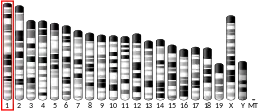| ATP6V1H | |||||||||||||||||||||||||||||||||||||||||||||||||||
|---|---|---|---|---|---|---|---|---|---|---|---|---|---|---|---|---|---|---|---|---|---|---|---|---|---|---|---|---|---|---|---|---|---|---|---|---|---|---|---|---|---|---|---|---|---|---|---|---|---|---|---|
| Identifiers | |||||||||||||||||||||||||||||||||||||||||||||||||||
| Aliases | ATP6V1H, MSTP042, NBP1, SFD, SFDalpha, SFDbeta, VMA13, CGI-11, ATPase H+ transporting V1 subunit H | ||||||||||||||||||||||||||||||||||||||||||||||||||
| External IDs | OMIM: 608861 MGI: 1914864 HomoloGene: 7139 GeneCards: ATP6V1H | ||||||||||||||||||||||||||||||||||||||||||||||||||
| |||||||||||||||||||||||||||||||||||||||||||||||||||
| |||||||||||||||||||||||||||||||||||||||||||||||||||
| |||||||||||||||||||||||||||||||||||||||||||||||||||
| |||||||||||||||||||||||||||||||||||||||||||||||||||
| |||||||||||||||||||||||||||||||||||||||||||||||||||
| Wikidata | |||||||||||||||||||||||||||||||||||||||||||||||||||
| |||||||||||||||||||||||||||||||||||||||||||||||||||
V-type proton ATPase subunit H is an enzyme that in humans is encoded by the ATP6V1H gene.[5][6][7]
Function
This gene encodes a component of vacuolar ATPase (V-ATPase), a multisubunit enzyme that mediates acidification of eukaryotic intracellular organelles. V-ATPase dependent organelle acidification is necessary for such intracellular processes as protein sorting, zymogen activation, receptor-mediated endocytosis, and synaptic vesicle proton gradient generation. V-ATPase is composed of a cytosolic V1 domain and a transmembrane V0 domain. The V1 domain consists of three A and three B subunits, two G subunits plus the C, D, E, F, and H subunits. The V1 domain contains the ATP catalytic site. The V0 domain consists of five different subunits: a, c, c', c", and d. Additional isoforms of many of the V1 and V0 subunit proteins are encoded by multiple genes or alternatively spliced transcript variants. This gene encodes the regulatory H subunit of the V1 domain which is required for catalysis of ATP but not the assembly of V-ATPase. Three alternatively spliced transcript variants encode two isoforms of the H subunit.[7]
References
- 1 2 3 GRCh38: Ensembl release 89: ENSG00000047249 - Ensembl, May 2017
- 1 2 3 GRCm38: Ensembl release 89: ENSMUSG00000033793 - Ensembl, May 2017
- ↑ "Human PubMed Reference:". National Center for Biotechnology Information, U.S. National Library of Medicine.
- ↑ "Mouse PubMed Reference:". National Center for Biotechnology Information, U.S. National Library of Medicine.
- ↑ Lu X, Yu H, Liu SH, Brodsky FM, Peterlin BM (May 1998). "Interactions between HIV1 Nef and vacuolar ATPase facilitate the internalization of CD4". Immunity. 8 (5): 647–56. doi:10.1016/S1074-7613(00)80569-5. PMID 9620685.
- ↑ Lai CH, Chou CY, Ch'ang LY, Liu CS, Lin W (May 2000). "Identification of novel human genes evolutionarily conserved in Caenorhabditis elegans by comparative proteomics". Genome Research. 10 (5): 703–13. doi:10.1101/gr.10.5.703. PMC 310876. PMID 10810093.
- 1 2 "Entrez Gene: ATP6V1H ATPase, H+ transporting, lysosomal 50/57kDa, V1 subunit H".
External links
- Human ATP6V1H genome location and ATP6V1H gene details page in the UCSC Genome Browser.
Further reading
- Stevens TH, Forgac M (1998). "Structure, function and regulation of the vacuolar (H+)-ATPase". Annual Review of Cell and Developmental Biology. 13: 779–808. doi:10.1146/annurev.cellbio.13.1.779. PMID 9442887.
- Geyer M, Fackler OT, Peterlin BM (Jul 2001). "Structure--function relationships in HIV-1 Nef". EMBO Reports. 2 (7): 580–5. doi:10.1093/embo-reports/kve141. PMC 1083955. PMID 11463741.
- Nishi T, Forgac M (Feb 2002). "The vacuolar (H+)-ATPases--nature's most versatile proton pumps". Nature Reviews Molecular Cell Biology. 3 (2): 94–103. doi:10.1038/nrm729. PMID 11836511. S2CID 21122465.
- Pedersen PL (Oct 2002). "Transport ATPases in biological systems and relationship to human disease: a brief overview". Journal of Bioenergetics and Biomembranes. 34 (5): 327–32. doi:10.1023/A:1021249701287. PMID 12539959. S2CID 38318926.
- Kawasaki-Nishi S, Nishi T, Forgac M (Jun 2003). "Proton translocation driven by ATP hydrolysis in V-ATPases". FEBS Letters. 545 (1): 76–85. doi:10.1016/S0014-5793(03)00396-X. PMID 12788495. S2CID 10507213.
- Morel N (Oct 2003). "Neurotransmitter release: the dark side of the vacuolar-H+ATPase". Biology of the Cell. 95 (7): 453–7. doi:10.1016/S0248-4900(03)00075-3. PMID 14597263. S2CID 17519696.
- Hu RM, Han ZG, Song HD, Peng YD, Huang QH, Ren SX, Gu YJ, Huang CH, Li YB, Jiang CL, Fu G, Zhang QH, Gu BW, Dai M, Mao YF, Gao GF, Rong R, Ye M, Zhou J, Xu SH, Gu J, Shi JX, Jin WR, Zhang CK, Wu TM, Huang GY, Chen Z, Chen MD, Chen JL (Aug 2000). "Gene expression profiling in the human hypothalamus-pituitary-adrenal axis and full-length cDNA cloning". Proceedings of the National Academy of Sciences of the United States of America. 97 (17): 9543–8. Bibcode:2000PNAS...97.9543H. doi:10.1073/pnas.160270997. PMC 16901. PMID 10931946.
- Mandic R, Fackler OT, Geyer M, Linnemann T, Zheng YH, Peterlin BM (Feb 2001). "Negative factor from SIV binds to the catalytic subunit of the V-ATPase to internalize CD4 and to increase viral infectivity". Molecular Biology of the Cell. 12 (2): 463–73. doi:10.1091/mbc.12.2.463. PMC 30956. PMID 11179428.
- Geyer M, Yu H, Mandic R, Linnemann T, Zheng YH, Fackler OT, Peterlin BM (Aug 2002). "Subunit H of the V-ATPase binds to the medium chain of adaptor protein complex 2 and connects Nef to the endocytic machinery". The Journal of Biological Chemistry. 277 (32): 28521–9. doi:10.1074/jbc.M200522200. PMID 12032142.
- Geyer M, Fackler OT, Peterlin BM (Jun 2002). "Subunit H of the V-ATPase involved in endocytosis shows homology to beta-adaptins". Molecular Biology of the Cell. 13 (6): 2045–56. doi:10.1091/mbc.02-02-0026. PMC 117623. PMID 12058068.
- Lu M, Vergara S, Zhang L, Holliday LS, Aris J, Gluck SL (Oct 2002). "The amino-terminal domain of the E subunit of vacuolar H(+)-ATPase (V-ATPase) interacts with the H subunit and is required for V-ATPase function". The Journal of Biological Chemistry. 277 (41): 38409–15. doi:10.1074/jbc.M203521200. PMID 12163484.
- Smith AN, Lovering RC, Futai M, Takeda J, Brown D, Karet FE (Oct 2003). "Revised nomenclature for mammalian vacuolar-type H+ -ATPase subunit genes". Molecular Cell. 12 (4): 801–3. doi:10.1016/S1097-2765(03)00397-6. PMID 14580332.




